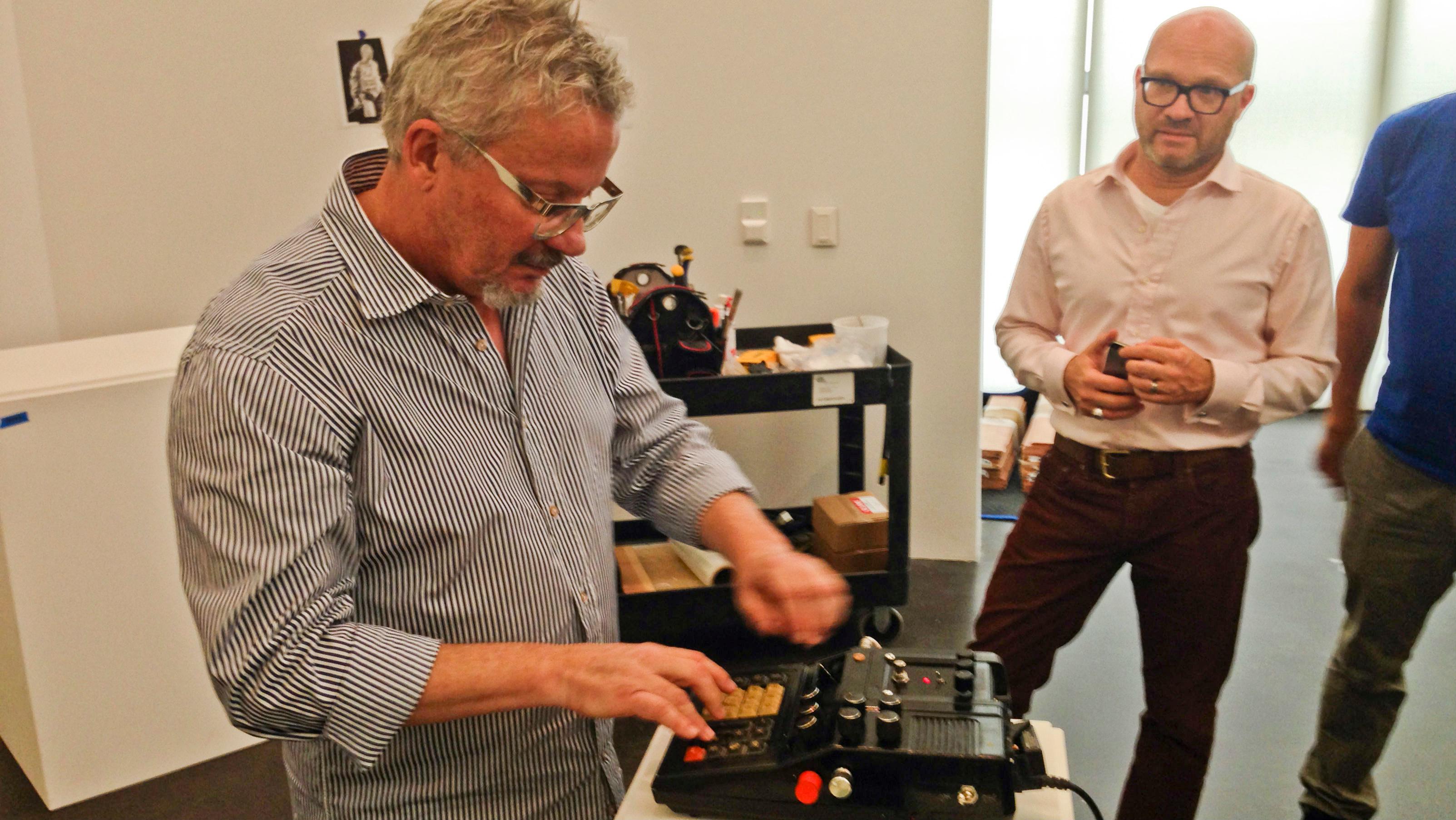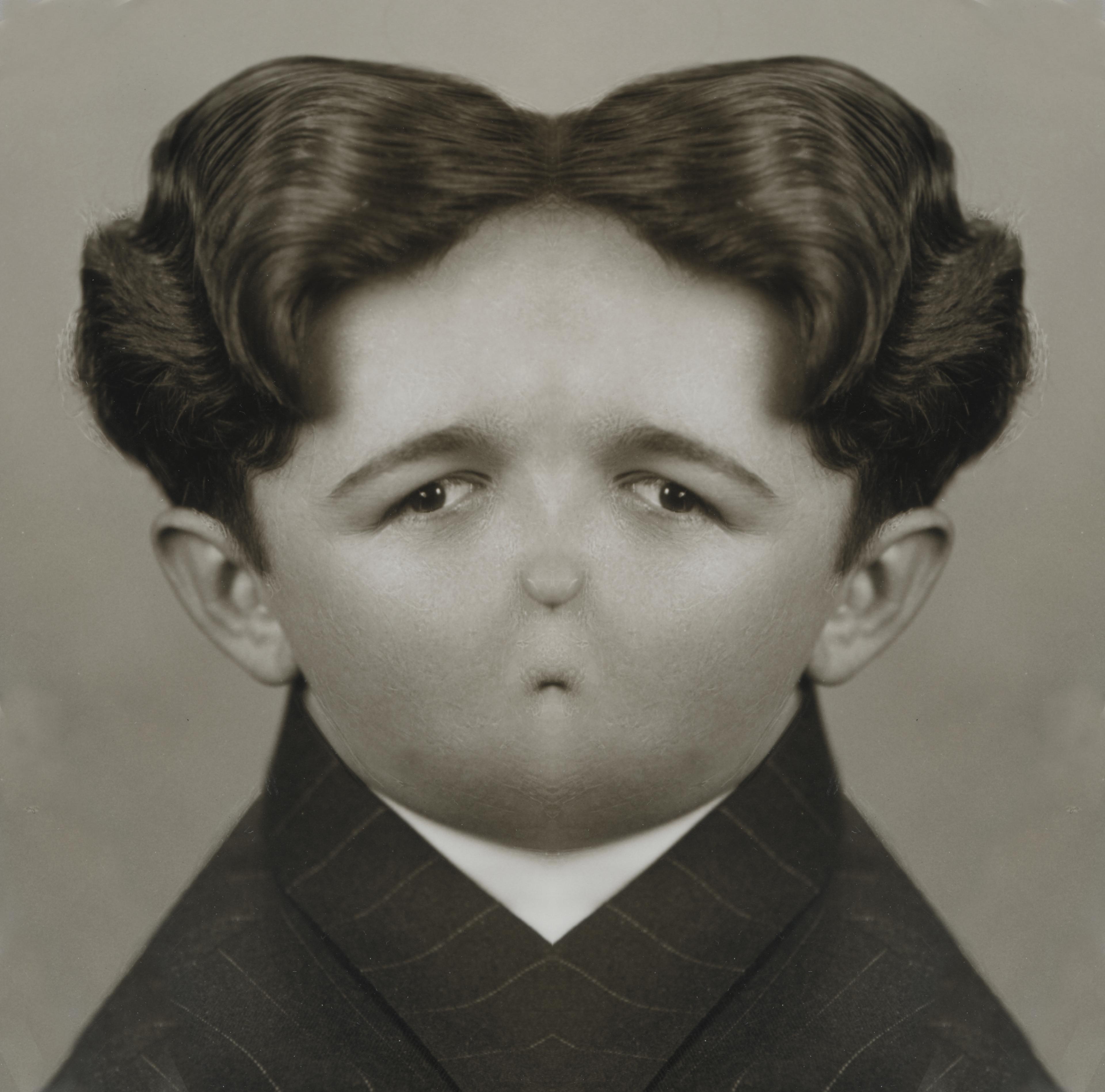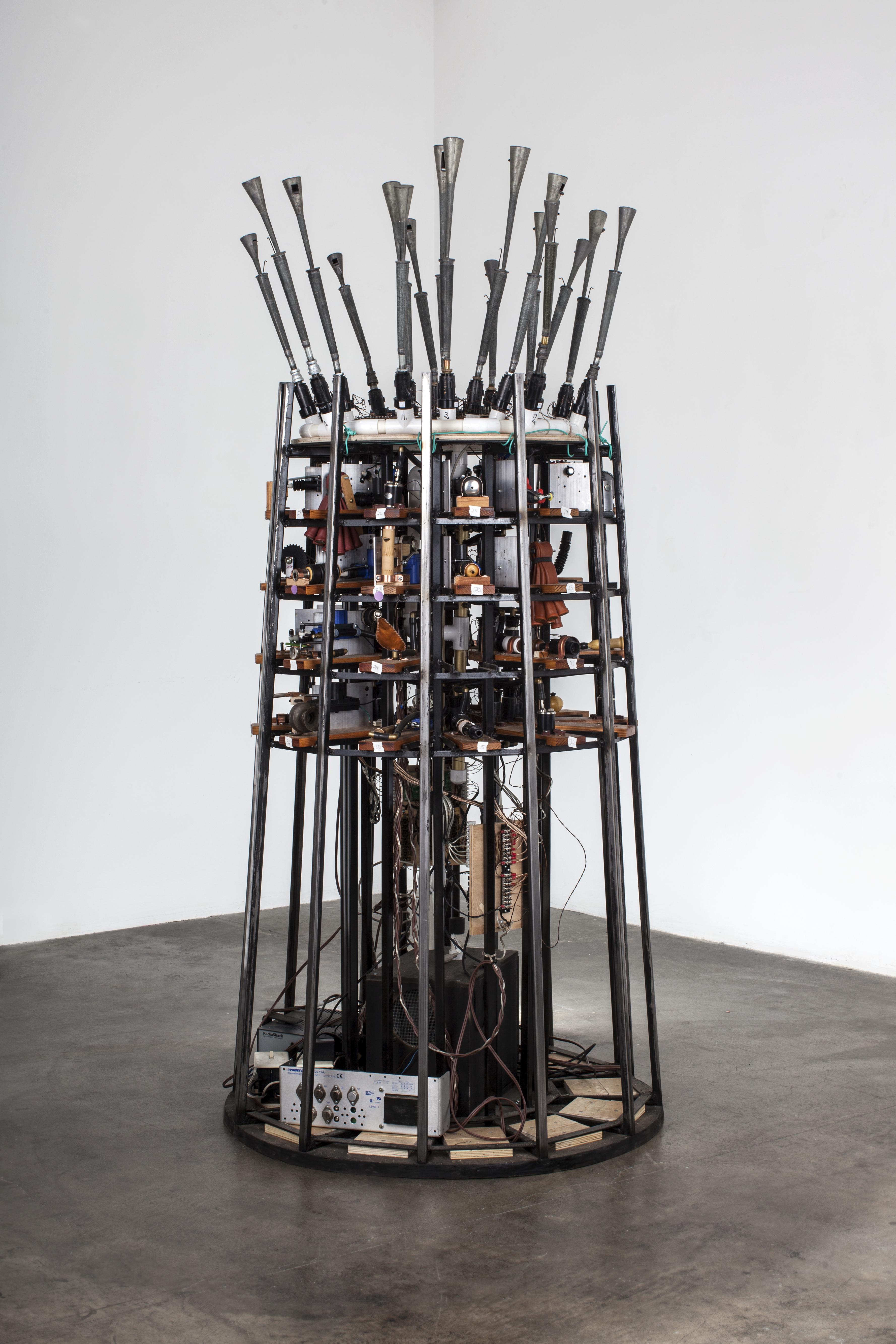
Seeing these everyday things clearly transformed the way the now-64-year-old artist saw the world. He started drawing the things he saw.
“I remember having a dream that I was going to be an artist,” Mothersbaugh says, recalling a time when his second grade teacher complimented him on a drawing of a tree, planting the seed from which his creative career would grow. “So it started that long ago, and it was because of myopia.”
That defining moment is the inspiration for "Mark Mothersbaugh: Myopia," the first major retrospective of Mothersbaugh’s life and work, curated by Denver’s Museum of Contemporary Art (MCA).
While the world knows Mothersbaugh best as a musician for his work with experimental rock band Devo and as a composer of film and television scores, the exhibition aims to shed light on his prolific visual art output.
“Myopia" is the first comprehensive solo show to date devoted to the artist, whose career spans more than 40 years. It runs in Denver through April 12, 2015, followed by a tour to six other cities in the United States, including New York, Los Angeles and Austin. (Update: The exhibit was extended through April 26.)
“Beautiful mutants”
MCA Denver director Adam Lerner approached Mothersbaugh in 2011 about developing the show.
“I think a theme throughout Mark’s work is this idea that if you’re somehow a mutant, somehow unable to function normally in society, that’s actually your strength and source of creativity,” Lerner says.

The show imaginatively threads various riffs on the theme of mutation, incorporating the concept into portraits, videos, sculptures, sound art installations and more.
One room displays a series of “Beautiful Mutants” -- vintage photographs edited to present symmetrical reflections of one side of a subject's body or face. The works surround a sculpture made up of the two back halves of a silver Scion car melded together.
Mothersbaugh says his thinking about mutant forms also guided his approach to a film score he wrote for director Wes Anderson's 2004 "The Life Aquatic With Steve Zissou."
After the composer delivered a piece that failed to satisfy the director, Mothersbaugh held the sheet music in front of a mirror and played the notes in reverse.
“I played it for him, and he goes, ‘That’s it!” Mothersbaugh says of Anderson. “It’s kind of interesting that he got a beautiful mutant sonically.”

Another experience composing for Anderson indirectly led to the construction of “Mechanical Aviary,” one of the artist's “Orchestrions” -- a series of sound art installations that together play an assortment of songs.
The installation features around 50 bird call gadgets resting on wooden shelves held together by a metal frame with old organ pipes poking out from the top. The assemblage looks like something out of an Italian Futurist movie of the early 20th century.
“Although these pipes played very traditional music in the first part of their lives, now in their reincarnation they are playing music that is much more fantastic,” Mothersbaugh says.
The Intersection of Music and Art
Mothersbaugh has continued to create art since his younger years growing up in Akron, Ohio.
He attended the nearby Kent State University, where he co-founded Devo. The new wave band emanated from the beat culture scene and played some of its earliest shows at literary 'zine release parties.
Steeped in performance art, Devo achieved cult status. But the band primarily orbited on the outskirts of the mainstream music industry even after the release of the hit song “Whip It” in 1980.
In addition to artifacts from the early Devo days, the “Myopia” exhibition features works ranging from Mothersbaugh’s childhood journal doodles to music videos.
And Mothersbaugh says he views his musical and visual art as one seamless whole.
“I don’t differentiate between this organ, these rugs, drawings that I do, or the music that I write,” Mothersbaugh says.
Examining process
While the exhibition surveys Mothersbaugh’s career chronologically, it also explores his creative process from start to finish.
Most of Mothersbaugh’s creative ideas share the same origin story: The artist draws on at least one postcard-sized piece of paper every day, a practice that he started decades ago. These small artworks seed bigger projects across many different media.
A large gallery at the MCA features around 30,000 of the artist's postcard-sized sketches and paintings, assembled in an abundance of books that visitors can flip through. These works have never been seen in an exhibition until now.
“I’ve gotten to do so much music and put it out there in the public,” Mothersbaugh says. “But the most primal thing to me is just paper and pencil. It keeps me going.”









